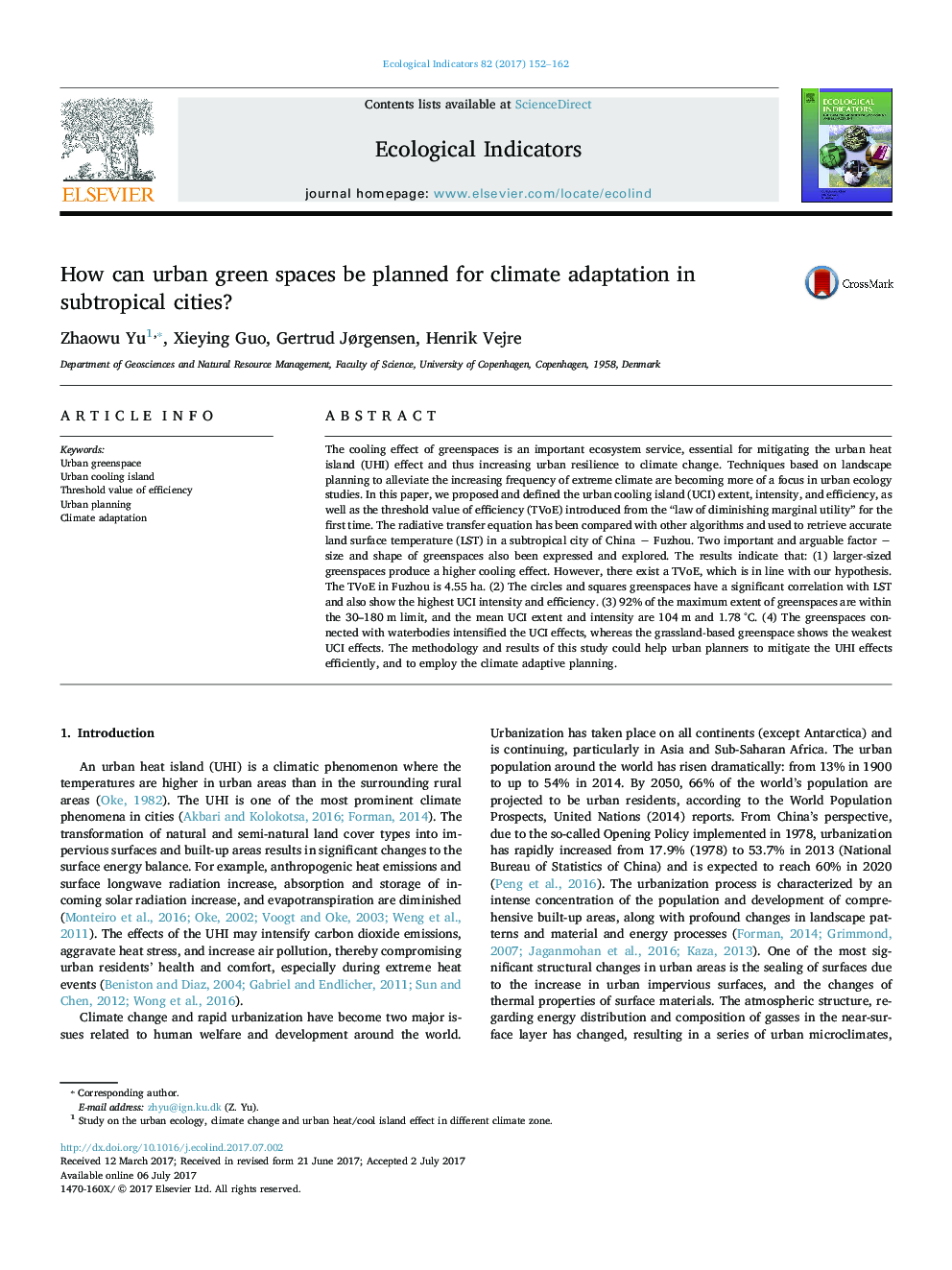| کد مقاله | کد نشریه | سال انتشار | مقاله انگلیسی | نسخه تمام متن |
|---|---|---|---|---|
| 5741317 | 1617120 | 2017 | 11 صفحه PDF | دانلود رایگان |
- The most accurate algorithms with which to retrieve land surface temperature in subtropical city is assessed.
- The concepts of cooling extent, intensity, and efficiency of green space are defined and calculated.
- The influences of the size and shape of green spaces on cooling the city and on climate adaptive design are shown.
- The UCI effect is dependent on different types of green space, including internal composition and external configuration characteristics.
- The methodology can be used in other cities to achieve sustainable and climate adaptive planning.
The cooling effect of greenspaces is an important ecosystem service, essential for mitigating the urban heat island (UHI) effect and thus increasing urban resilience to climate change. Techniques based on landscape planning to alleviate the increasing frequency of extreme climate are becoming more of a focus in urban ecology studies. In this paper, we proposed and defined the urban cooling island (UCI) extent, intensity, and efficiency, as well as the threshold value of efficiency (TVoE) introduced from the “law of diminishing marginal utility” for the first time. The radiative transfer equation has been compared with other algorithms and used to retrieve accurate land surface temperature (LST) in a subtropical city of China â Fuzhou. Two important and arguable factor â size and shape of greenspaces also been expressed and explored. The results indicate that: (1) larger-sized greenspaces produce a higher cooling effect. However, there exist a TVoE, which is in line with our hypothesis. The TVoE in Fuzhou is 4.55 ha. (2) The circles and squares greenspaces have a significant correlation with LST and also show the highest UCI intensity and efficiency. (3) 92% of the maximum extent of greenspaces are within the 30-180 m limit, and the mean UCI extent and intensity are 104 m and 1.78 °C. (4) The greenspaces connected with waterbodies intensified the UCI effects, whereas the grassland-based greenspace shows the weakest UCI effects. The methodology and results of this study could help urban planners to mitigate the UHI effects efficiently, and to employ the climate adaptive planning.
Journal: Ecological Indicators - Volume 82, November 2017, Pages 152-162
